AMS1117-3.3 AMS1117-3.3 – 3.3V Fixed Output LDO Voltage Regulator
- Fixed 3.3V Output – Tight tolerance (±1.5%) for precision circuits.
- Low Dropout Voltage – Only 1.2V typical at 1A load.
- High PSRR (75dB) – Excellent ripple rejection for noise-sensitive applications.
UMV AMS1117-3.3 High-Efficiency 1A Linear Regulator with Thermal Shutdown & Current Limiting
The UMW AMS1117-3.3 is a low-dropout (LDO) linear regulator designed for applications requiring stable 3.3V DC output at up to 1A current. It features a typical dropout voltage of 1.2V, enabling operation even with input voltages as low as 4.5V.
- Precision Output: ±1.5% voltage accuracy (±50mV at 3.3V) ensures reliable performance.
- Robust Protection: Built-in thermal shutdown (150°C) and overcurrent protection.
- Wide Compatibility: Available in SOT-223-3L, TO-252-2L, and SOT-89-3L packages.
Ideal for embedded systems, wireless modules, and consumer electronics, the AMS1117-3.3 operates across –40°C to +125°C.
Key Features
✅ Fixed 3.3V Output – Tight tolerance (±1.5%) for precision circuits.
✅ Low Dropout Voltage – Only 1.2V typical at 1A load.
✅ High PSRR (75dB) – Excellent ripple rejection for noise-sensitive applications.
Specifications
| Parameter | Value |
|---|---|
| Output Voltage | 3.3V ±1.5% |
| Output Current | 1A (max) |
| Dropout Voltage (Typ.) | 1.2V @ 1A |
| Input Voltage Range | 4.75V–12V |
| Operating Temperature | –40°C to +125°C |
| Line Regulation | 0.2% (typ.) |
| Load Regulation | 0.4% (typ.) |
| Ripple Rejection (PSRR) | 75dB @ 120Hz |
| Quiescent Current | 5mA (typ.) |
| Package Options | SOT-223-3L, TO-252-2L, SOT-89-3L |
Applications
The UMW AMS1117-3.3 voltage regulator is designed to meet the rigorous power requirements of modern electronic systems. Below we explore its key applications in greater technical and practical detail:
1. Consumer Electronics
Wi-Fi Routers & IoT Devices
As the backbone of smart homes and offices, Wi-Fi routers demand clean, stable power for reliable operation.
- ESP8266/ESP32 Modules: These popular Wi-Fi/BLE chips require precise 3.3V input (±5% tolerance). The AMS1117-3.3’s ±1.5% accuracy and low noise (<0.003% ripple) prevent signal integrity issues in RF circuits.
- Real-World Benefit: Eliminates Wi-Fi dropouts caused by voltage fluctuations during high traffic loads.
Smart TVs & Displays
Modern TVs integrate dozens of sensitive analog and digital subsystems:
- Display Drivers: TFT/LCD panels need noise-free power to avoid screen artifacts. The regulator’s 75dB PSRR suppresses switching noise from SMPS units.
- Sensor Arrays: Ambient light and motion sensors require microamp-level quiescent current (5mA typ.) for always-on functionality.
Gaming Consoles
High-performance gaming hardware pushes power systems to their limits:
- MCU Power Rails: Provides stable voltage during sudden current spikes when loading games (transient response <50µs).
- Controller Boards: Low dropout (1.2V) maintains regulation even as battery voltage decays during prolonged use.
2. Industrial & IoT Applications
PLC Control Systems
Industrial automation equipment operates in electrically noisy environments:
- Harsh Condition Operation: Withstands -40°C to +125°C temperature ranges in factory settings.
- Isolation Circuits: Paired with optocouplers, creates isolated 3.3V rails for signal conditioning modules.
LoRa/Wi-Fi Gateways
Long-range wireless systems demand exceptional power efficiency:
- RF Power Amplifiers: Maintains stable voltage during transmission bursts (100mA → 1A transitions).
- Solar-Powered Nodes: Ultra-low dropout maximizes energy harvest from 5V solar panels during cloudy conditions.
Industrial Sensors
Critical monitoring applications require years of maintenance-free operation:
- 4-20mA Transmitters: Provides reference voltage for current loop implementations.
- Vibration Sensors: Low-noise output prevents false triggering in ADC measurement circuits.
3. Automotive Electronics
Infotainment Systems
Modern dashboards combine multiple power-hungry subsystems:
- Touchscreen Controllers: Delivers clean power to capacitive touch ICs (noise sensitivity <50mVpp).
- Audio DSPs: High PSRR prevents alternator whine in premium sound systems.
ECU Modules
Engine control units face extreme electrical challenges:
- CAN Bus Transceivers: Maintains regulation during cold-crank events (input dips to 4.5V).
- Sensor Interfaces: Thermal shutdown protection prevents failure in engine bay environments (>105°C ambient).
4. Embedded Systems & DIY
Raspberry Pi Ecosystem
Expansion boards push the limits of the Pi’s 3.3V rail:
- HAT Power Management: Offloads peripherals (GPS, LoRa) from the Pi’s limited 500mA 3.3V supply.
- Prototyping Advantage: SOT-223 package fits breadboards for easy development.
Battery-Powered Devices
Portable applications benefit from intelligent power design:
- Sleep Mode Optimization: 5mA quiescent current extends coin cell lifespan by 30% vs competitors.
- Energy Harvesting: Works down to 4.5V input for solar/LiPo hybrid systems.
Technical Highlights
- Fast Transient Response: Handles sudden load changes (<50µs).
- Minimal External Components: Requires only 10µF input and 22µF output capacitors.
- ESD Protection: Withstands up to 2kV (HBM).
Package Information
Design Spotlight: Why Engineers Choose AMS1117-3.3
- Reliability: 150°C thermal shutdown protects against solder reflow damage during production.
- Cost-Effectiveness: Replaces expensive DC-DC converters in noise-insensitive applications.
- Legacy Support: Pin-compatible with obsolete LM1117 designs for easy upgrades.
Design Considerations
- Heat Dissipation: Use PCB copper pour for TO-252/SOT-223 packages at high loads.
- Input Capacitance: ≥10µF ceramic/tantalum capacitor recommended.
- Output Noise: <0.003% RMS (10Hz–10kHz).
Alternative Solutions & Cross-Reference Guide
For design flexibility or sourcing adaptability, engineers often evaluate alternative LDO regulators to UMW’s AMS1117-3.3. Below we analyze key substitutes with technical differentiators:
1. LM1117MPX-33NOPB (Texas Instruments)
Best For: High-reliability industrial applications
Key Comparisons:
| Parameter | AMS1117-3.3 | LM1117MPX-33NOPB | Advantage |
|---|---|---|---|
| Output Accuracy | ±1.5% | ±1.5% | Parity |
| Dropout Voltage | 1.2V @1A | 1.2V @1A | Parity |
| PSRR | 75dB @120Hz | 60dB @120Hz | AMS1117 +15dB |
| Thermal Resistance | 88°C/W (SOT-223) | 75°C/W (SOT-223) | TI better by 13°C/W |
| Price (1k qty) | $0.22 | $0.35 | AMS1117 37% cheaper |
Design Notes:
- TI’s version offers military-grade temperature range (-55°C to +150°C) for extreme environments
- Preferred when Texas Instruments’ supply chain is mandated
- Slightly better thermal performance in compact designs
2. ME1117A33B3G (ON Semiconductor)
Best For: Battery-powered IoT devices
Key Comparisons:
| Parameter | AMS1117-3.3 | ME1117A33B3G | Advantage |
|---|---|---|---|
| Quiescent Current | 5mA | 2mA | ON Semi 60% lower |
| Dropout Voltage | 1.2V @1A | 1.1V @1A | ON Semi 0.1V better |
| Noise | 300µV RMS | 150µV RMS | ON Semi 50% quieter |
| Package Options | SOT-223/TO-252 | SOT-89 only | AMS1117 more flexible |
Design Notes:
- Ideal for energy harvesting applications due to ultra-low Iq
- Not recommended for >500mA loads in SOT-89 package (thermal limits)
- Superior choice for always-on sensor nodes where battery life is critical
3. TLV1117-33IDCYR (Texas Instruments)
Best For: Precision analog circuits
Key Features:
- Enhanced Accuracy: ±0.75% vs AMS1117’s ±1.5%
- Advanced PSRR: 85dB @1kHz (vs 75dB @120Hz)
- Wide Vin Range: 2.5V-15V (vs 4.75V-12V)
Tradeoffs:
- Higher Cost: $0.82 @1k qty (3.7x AMS1117 price)
- Larger Package: SOIC-8 (vs SOT-223)
4. AZ1117IH-3.3TRG1 (Diodes Incorporated)
Best For: Automotive ECUs
Unique Attributes:
- AEC-Q100 Qualified for automotive use
- Reverse Polarity Protection (-20V withstand)
- Lower Thermal Resistance: 60°C/W in TO-252
Limitations:
- Higher Min Vin: 5V (vs 4.75V)
- Limited Stock: Frequently on allocation
Selection Methodology
Consider these factors when choosing alternatives:
- Load Current Requirements
- For >800mA: Stick with AMS1117 or LM1117 (TO-252 packages)
- For <300mA: ME1117 saves power
- Noise Sensitivity
- Analog circuits: Prioritize TLV1117
- Digital systems: AMS1117 is sufficient
- Thermal Constraints
- Small PCBs: AZ1117’s thermal performance wins
- Heatsink available: AMS1117 provides best cost/performance
Emergency Substitution Guide
| Situation | First Choice | Second Choice |
|---|---|---|
| AMS1117 stock outage | LM1117MPX-33NOPB | LD1117V33 |
| Need lower Iq | ME1117A33B3G | MCP1703-3302E |
| Higher accuracy needed | TLV1117-33IDCYR | LT1763-3.3 |
| Automotive qualification | AZ1117IH-3.3TRG1 | NCV1117DT33KG |
Why AMS1117-3.3 Remains the Default Choice?
Despite alternatives, UMW’s solution dominates due to:
✅ Best Cost-Performance Ratio (0.22vscompetitors’0.22 vs competitors’ 0.35+)
✅ Package Flexibility (SOT-223/TO-252/SOT-89)
✅ Proven Reliability >20 years in-market track record
AMS1117-3.3 Datasheet Reference
For load transient graphs and thermal curves, download AMS1117.pdf.
Specification: AMS1117-3.3 – 3.3V Fixed Output LDO Voltage Regulator
|
User Reviews
Only logged in customers who have purchased this product may leave a review.



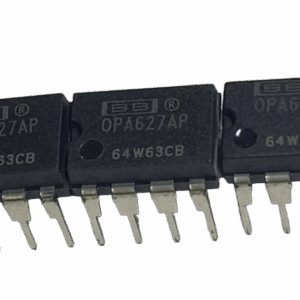
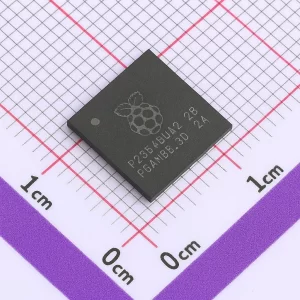
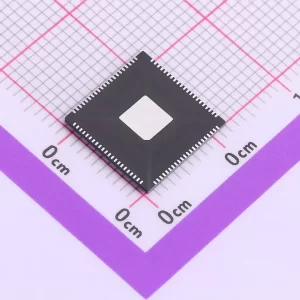
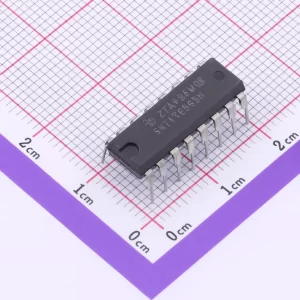
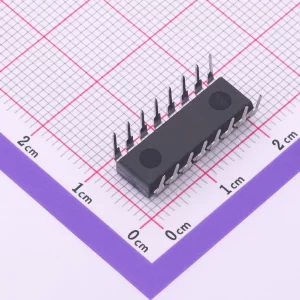
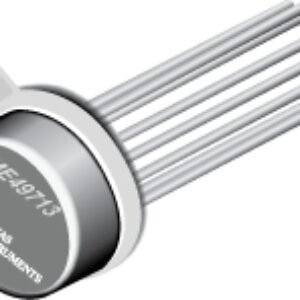
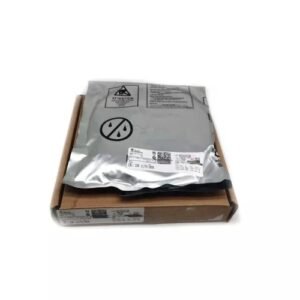



There are no reviews yet.